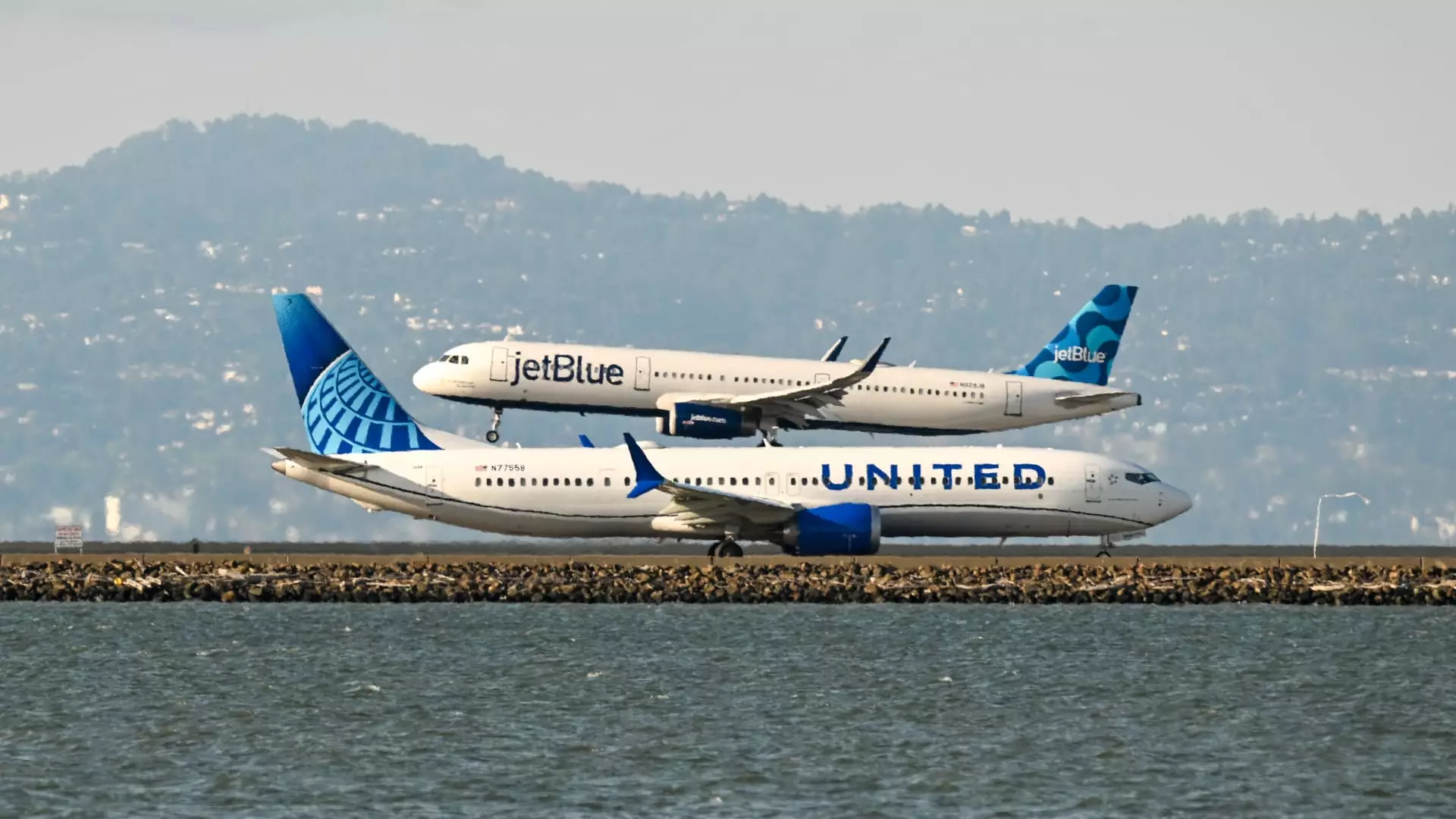In a move that has the potential to reshape the competitive landscape of the airline industry, United Airlines is once again setting its sights on New York’s John F. Kennedy International Airport (JFK) through a novel collaboration with JetBlue Airways. This partnership, termed Blue Sky, aims to transcend traditional airline alliances by enabling revenue sharing, loyalty benefits, and a more comprehensive network for travelers. As the stakes in the airline industry continue to rise, this partnership signals a shift toward a more competitive environment that could ultimately benefit the consumer.
Groundbreaking Features of the Blue Sky Collaboration
One of the most exciting features of the Blue Sky partnership is its emphasis on consumer choice. With both airlines allowing the sale of seats on each other’s platforms, passengers will now have unprecedented access to a wider array of flights and destinations. This not only maximizes convenience but also ensures that travelers can earn frequent flyer miles and enjoy various reciprocal loyalty perks, such as priority boarding and enhanced seating options. In an industry often criticized for its lack of flexibility, this partnership signifies a refreshing focus on customer needs and preferences.
Moreover, the shared strategy of targeting key markets such as Boston and the Caribbean highlights the intent behind this alliance. United’s CEO Scott Kirby has pointed out that together, they can hold their own against larger competitors like Delta Air Lines. By allowing JetBlue to operate multiple flights out of Newark while United will revive its JFK operations, both airlines can optimize their routes and capitalize on their strengths. This revitalized collaboration could catalyze a new era of airline competition that prioritizes consumer value over market dominance.
A Long-Overdue Return to JFK
United’s previous exit from JFK in 2015, a decision Kirby himself has criticized, created a vacuum that other airlines have filled at an alarming pace. The airline recognized its error, especially when rival American Airlines seized the opportunity to attract corporate clients who are now reluctant to switch back. The recent announcement of the Blue Sky partnership demonstrates United’s commitment to re-establishing itself as a formidable player in New York’s aviation market.
Although they will only gain access to seven daily round-trip flights initially, this move signifies a promising return to JFK that could evolve over time. United’s history with JFK, marred by a previous lack of offensive strategy, now seems to be a challenge they are determined to overcome—again raising the stakes in the fast-evolving airline competition landscape.
What Lies Ahead: Regulatory Review and Future Prospects
As is often the case with industry shake-ups, the Blue Sky deal is subject to regulatory review, leaving the future somewhat uncertain. However, the willingness of both United and JetBlue to collaborate rather than compete viciously bodes well for consumers seeking more competitive airfares and a better overall flying experience. Unlike their previous alliance with American Airlines, which was rejected on antitrust grounds, this partnership seems to tread lightly while opening doors for greater cooperation in an already crowded market.
The potential for JetBlue’s hardworking travelers to access United’s vast global network only amplifies the positive sentiment surrounding this partnership. If this collaboration can successfully navigate the regulatory landscape, the resulting benefits for travelers could be game-changing, creating a landscape where choice and value take precedence.
The Bigger Picture: Consumer-Centric Transformation
While the aviation industry typically operates under tight constraints and regulations, there is a newfound urgency among airlines to rethink their operational strategies. This partnership represents more than just a business arrangement; it captures an industry-wide awakening to the necessity of prioritizing customer needs in a climate filled with competition and uncertainty. As JetBlue’s CEO Joanna Geraghty astutely remarked, this partnership could signal a bold step forward—one that merges the ethos of two customer-focused airlines.
In a world where corporate maneuvers often overshadow individual preferences, the Blue Sky collaboration stands out, promising a more customer-centric future. Passengers might finally feel empowered with real choices, driving airlines to step up their service standards and innovate in ways that enhance the overall travel experience. This transformation could have profound implications, setting new benchmarks for service, pricing, and customer engagement across the entire airline industry.

